 W
WThe Peenemünde Army Research Center was founded in 1937 as one of five military proving grounds under the German Army Weapons Office (Heereswaffenamt). Several German guided missiles and rockets of World War II were developed by the HVP, including the V-2 rocket. The works were attacked by the British in Operation Crossbow from August 1943, before falling to the Soviets in May 1945.
 W
WPeenemünde Airfield is an airfield along the Baltic Sea north of Peenemünde, Germany. Today round trips in light aircraft take place from Peenemünde Airfield. Bus tours are also available, on which one can visit the former shelters of the NVA and the remnants of the V-1 flying bomb facilities. Because of its long runway the airfield Peenemünde is also a location for flight schools.
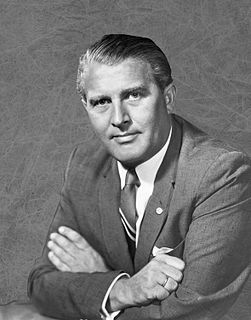 W
WWernher Magnus Maximilian Freiherr von Braun was a German-born American aerospace engineer and space architect. He was the leading figure in the development of rocket technology in Nazi Germany and a pioneer of rocket and space technology in the United States.
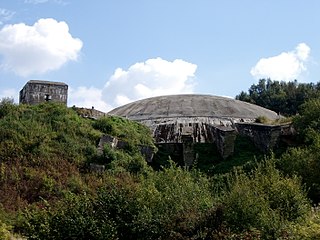 W
WCrossbow was the code name in World War II for Anglo-American operations against the German long range reprisal weapons (V-weapons) programme.
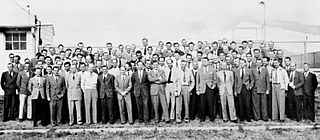 W
WHans Joachim Oskar Fichtner was a rocket scientist who worked on V-2 rockets for Wernher von Braun at Peenemünde from 1939 to 1945. He was among the scientists to surrender and travel to the United States to provide rocketry expertise via Operation Paperclip which took them first to Fort Bliss, Texas (1945–1949). He continued his work with the team when they moved to Redstone Arsenal, and he joined Marshall Space Flight Center to work for NASA.
 W
WWalter Haeussermann was a German-American aerospace engineer and member of the "von Braun rocket group", both at Peenemünde and later at Marshall Space Flight Center, where he was the director of the guidance and control laboratory. He was awarded the Department of the Army Decoration for Exceptional Civilian Service in 1959 for his contributions to the US rocket program.
 W
WThe Heinkel He 176 was a German rocket-powered aircraft. It was the world's first aircraft to be propelled solely by a liquid-fueled rocket, making its first powered flight on 20 June 1939 with Erich Warsitz at the controls. It was a private venture by the Heinkel company in accordance with director Ernst Heinkel's emphasis on developing technology for high-speed flight. The performance of the He 176 was not spectacular, but it did provide "proof of concept" for rocket propulsion.
 W
WThe Peenemünde Historical Technical Museum, former "Peenemünde Information Centre for History and Technology" is a museum, founded in 1991, in the observation bunker and site of the former power station in Peenemünde on the island of Usedom in eastern Mecklenburg-Vorpommern in Germany. The museum is dedicated to the history of the Peenemünde Army Research Centre and the Luftwaffe test site of "Peenemünde-West", especially the rockets and missiles developed there between 1936 and 1945. Since January 2007 the information centre has become an anchor point on the European Route of Industrial Heritage (ERIH), a Europe-wide network of industrial monuments, and a part of the ERIH themed routes for Energy and Transport & Communication.
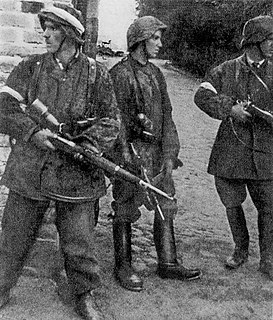 W
WDuring World War II, the Polish resistance Home Army, which conducted military operations against occupying German forces, was also heavily involved in intelligence work. This included operations investigating the German Wunderwaffe: the V-1 flying bomb and the V-2 rocket. British intelligence received their first Polish report regarding the development of these weapons at Peenemünde in 1943.
 W
WOperation Hydra was an attack by RAF Bomber Command on a German scientific research centre at Peenemünde on the night of 17/18 August 1943. Group Captain John Searby, CO of 83 Squadron, commanded the operation, the first time that Bomber Command used a master bomber to direct the attack of the main force. Hydra began Operation Crossbow, a campaign against the German V-weapon programme. The British lost 215 aircrew, 40 bombers and killed several hundred enslaved workers in the nearby Trassenheide labour camp. The Luftwaffe lost twelve night-fighters and about 170 German civilians were killed, including two V-2 rocket scientists. Prototype V-2 rocket launches were delayed for about two months, testing and production was dispersed and the morale of the German survivors was severely affected.
 W
WThe list of V-2 test launches identifies World War II launches of the A4 rocket. Test launches were made at Peenemünde Test Stand VII, Blizna and Tuchola Forest using experimental and production rockets fabricated at Peenemünde and at the Mittelwerk. Post-war launches were conducted at Cuxhaven, White Sands Proving Grounds, Cape Canaveral, Kapustin Yar, and on the USS Midway during Operation Sandy.
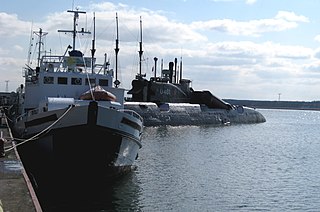 W
WPeenemünde is a municipality on the Baltic Sea island of Usedom in the Vorpommern-Greifswald district in Mecklenburg-Vorpommern, Germany. It is part of the Amt of Usedom-Nord. The community is known for the Peenemünde Army Research Center, where the world's first functional large-scale liquid-propellant rocket, the V-2, was developed.
 W
WPeenemünde Airfield is an airfield along the Baltic Sea north of Peenemünde, Germany. Today round trips in light aircraft take place from Peenemünde Airfield. Bus tours are also available, on which one can visit the former shelters of the NVA and the remnants of the V-1 flying bomb facilities. Because of its long runway the airfield Peenemünde is also a location for flight schools.
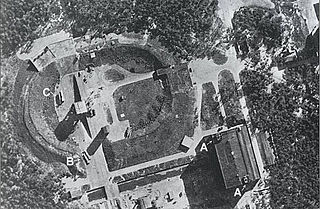 W
WTest Stand VII was the principal V-2 rocket testing facility at Peenemünde Airfield and was capable of static firing of rocket motors up to 200 tons thrust. Notable events at the site include the first successful V-2 launch on 3 October 1942, visits by German military leaders, and Allied reconnaissance overflights and bombing.
 W
WThe V-2, with the technical name Aggregat 4 (A4), was the world's first long-range guided ballistic missile. The missile, powered by a liquid-propellant rocket engine, was developed during the Second World War in Germany as a "vengeance weapon" and assigned to attack Allied cities as retaliation for the Allied bombings against German cities. The V-2 rocket also became the first artificial object to travel into space by crossing the Kármán line with the vertical launch of MW 18014 on 20 June 1944.